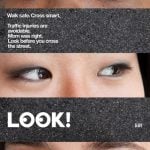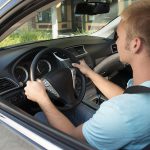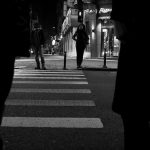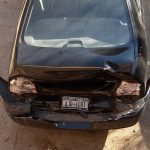Digital signage is a distracted driving hazard
Even without smartphones, screaming kids, backseat drivers and in-vehicle displays, driving can be dangerous. The open road may pose one of the biggest — and, incidentally, legal — distractions of all. LED billboards, as a recent study, “A field study on the effects of digital billboards on glance behavior during highway driving,” suggests, may pose similar distractions. And, unlike other preventative measures, such as turning off a smartphone before driving, there is little drivers can do to avoid the flashing glare of a roadside display.
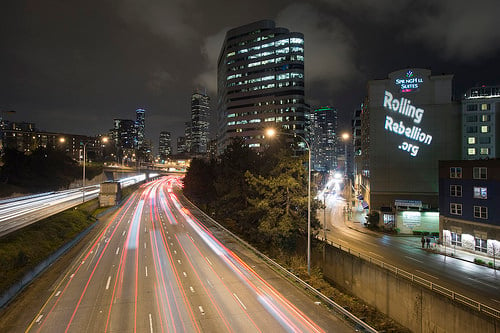
A study has found that digital signage distracts drivers, presenting unique hazards. Image from Backbone Campaign.
While recent research has targeted in-car disturbances, like changing the radio station or making a call using a screen interface — and though there is research available on external distractions, as the study’s authors point out — the relative lack of related collisions makes scientific analysis of the natural environment (in other words, where the driver is driving) difficult. For this study, the authors investigated drivers’ glances and vehicle control while driving past a digital billboard on a highway, comparing behavior when drivers passed the same double-sided billboard in two different directions.
First, it’s important to understand the basics of how drivers’ visual attention works. As the researchers write, “visual attention is the mechanism by which one selects or orients toward objects, features or locations for further processing or action… Inherent in the concept of selecting one of ‘several simultaneously possible objects or trains of thought’ for further processing is the rejection of others.” In other words, drivers simply cannot see everything at once.
There are different aspects of attention, including “shifts of covert attention” and “shifts of glance,” and studies have found varying indicators of accidents: one perspective reveals that glances within approximately two seconds of the onset of a distraction were the best predictor of crashes or near-crashes; another research study suggests that glances of more than two seconds were themselves the most accurate predictor of danger. The takeaway? This recent study’s researchers note, that in either case the “delayed detection” of cars, pedestrians or others, are the primary factor in accidents, and digital displays can contribute to distracting a driver’s attention.
For this study, drivers were asked to drive a 2010 Lincoln MKS as they “normally would” along a route north of Boston, Mass. After about 10 minutes on the highway, drivers passed the first digital billboard on the right; after another period of about two hours, they passed the second digital billboard on the left. The billboard was two-sided, with one display surface facing northbound and one the southbound. The researchers measured drivers’ glances, time spent looking off the road, and impact on driving.
The discoveries? The researchers found an increased number and duration of glances, regardless of the direction the drivers were headed. They also found that glances off road, and toward the billboard, significantly increase when there is a billboard present, and that glances toward the billboard increase at the time the billboard switches its ads or displays. Time spent glancing off-road has long been associated with accidents and near-accidents.
While currently only 1 percent of ads are digital, that figure is expected to grow, and, with it, so will drivers’ distractions. “Technology frequently outpaces policy innovation,” write the authors, “however, the growth of digital content on the nation’s roadsides is foreseeable.” The Federal Highway Administration, for one, in 2007 deferred legislation governing digital billboards onto the states (though it did provide guidance on billboard placement as well as the frequency with which content can be changed). Governmental intervention is necessary, they advocate, calling for more research into the impact of signs that engage, and, potentially fatally, distract, drivers.
Related Posts
Category: Miscellaneous, News, Transportation












